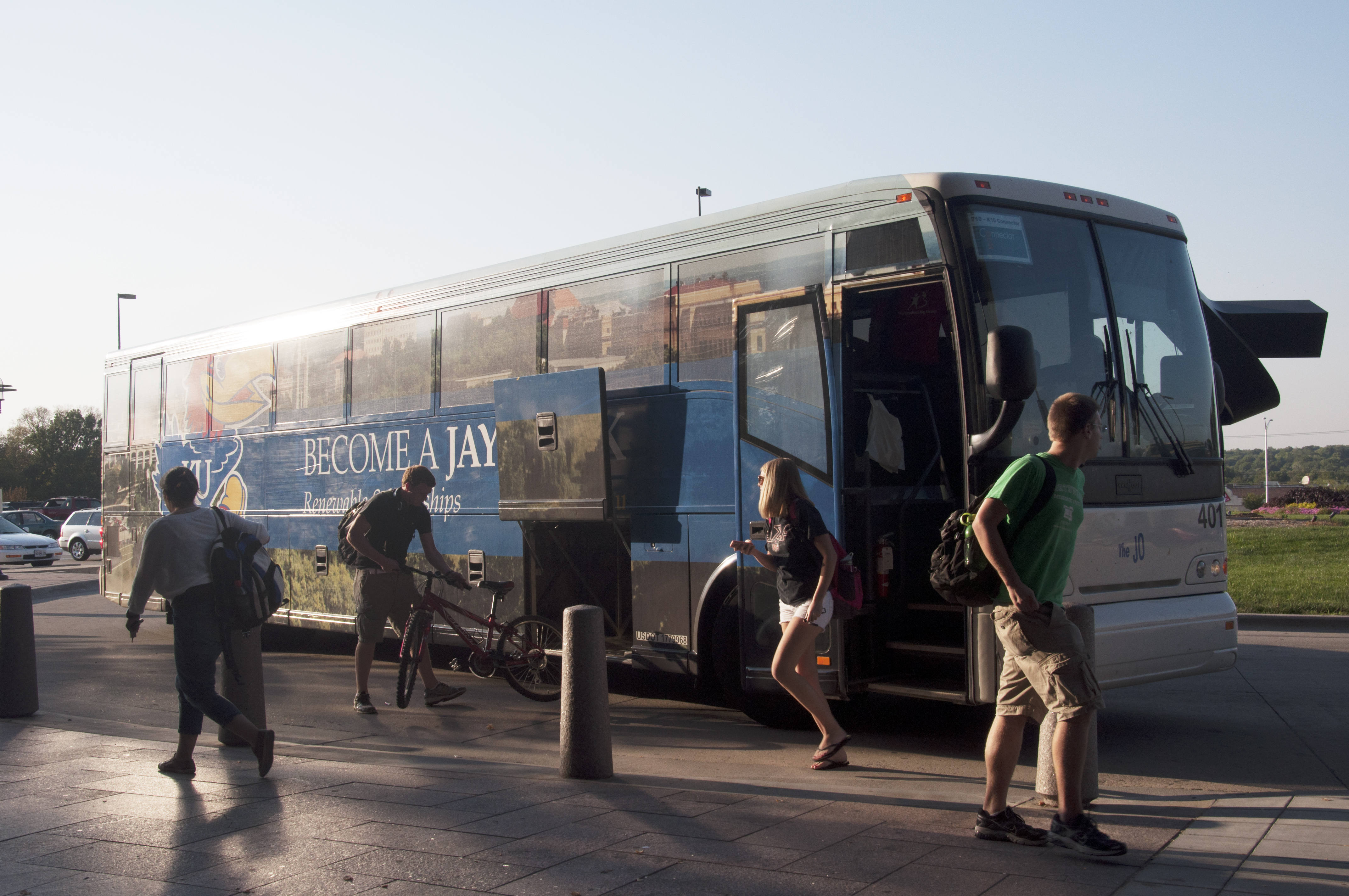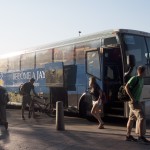

By David Hurtado
With Americans paying through the nose at the pump, relieving the vice grip gas prices have on wallets resonates with many people.
The 710 K-10 Connector route, which runs between Lawrence and the college, provides students with a cheaper means of getting to school.
Chuck Ferguson, deputy transportation director, said rates for the K-10 Connector could see an increase in the near future. Johnson County Transit is currently dealing with a budget crisis that will require a significant reduction in services next year.
“The K-10 Connector is both the longest route in miles and the route with the most service daily of any JO route,” Ferguson said. “It also is equipped with Wi-Fi capabilities, unlike other JO routes.
The budget deficit is the result of a reduction in federal and state operating funds. Some local officials have recommended students be charged extra for using the Wi-Fi capabilities. Ferguson also said Johnson County operates the service that is designed to connect three campuses in two counties, yet Johnson County shoulders the operating cost burden alone.
The fare increase proposal is still being finalized and is expected to take effect in January 2013.
It costs approximately $933,000 a year to operate the 710 K-10 connector. Roughly $426,000 of the cost is funded by taxpayers.
Alternatives such as buying a hybrid or electric car can cost more than most people would like to fork out. Even carpooling has its setbacks for people who like driving on the road alone. Riding the bus or other forms of public transit saves gas, negates car insurance, eliminates maintenance expenses and reduces the monthly payments one makes.
Brandon Cleveland-Soter, student, said he rides the bus for those reasons.
“I don’t have a car, it’s very convenient and it’s a hell of a lot cheaper,” he said. “If [the bus] gets into a crash, I don’t have to pay for it.”
The route was first established in January of 2007 from a study conducted by the Kansas Department of Transportation (KDOT).
“They looked at widening the corridor and how they could move more traffic on the corridor,” Ferguson said. “As a subset discussion from that we decided it would be a good experiment to try a connector service between Lawrence and Overland Park, specifically connecting the universities of Kansas. It’s been widely successful.”
With the elimination of over 200 parking spots at the college, taking the bus may be a more viable option for students.
In addition to lending a hand to cash-strapped students, riding the bus can benefit the environment. According to the American Public Transport Association (APTA), 1.4 billion gallons of fuel and 1.5 billion tons of carbon dioxide are saved annually through public transportation. Another APTA study found families condensed their expenses by $6,200 annually though public transportation.
Still, riding the bus has its share of problems just as carpooling and energy efficient vehicles do. Traveling time can take longer, since it’s likely the bus will be making other stops before arriving at your destination. This is also compounded by the fact that the bus may not always be on time, whether it’s due to accidents, road work or the driver.
Katarina Unruh, student, said the bus is usually on time both to and from the college, and has only experienced minor discomforts on The JO.
“Sometimes it’s overcrowded and sometimes the Wi-Fi messes up, but that’s about it,” she said.
Contact David Hurtado, features editor, at [email protected].





















